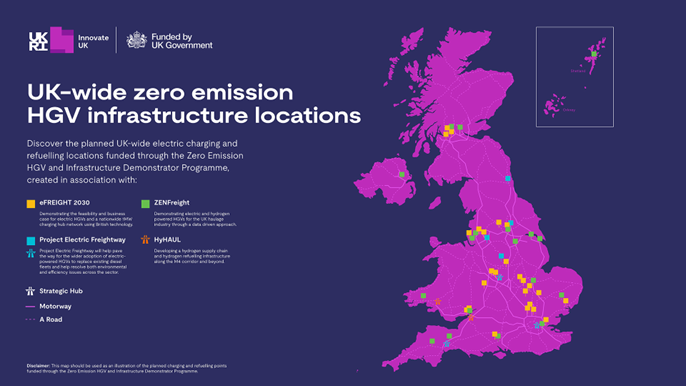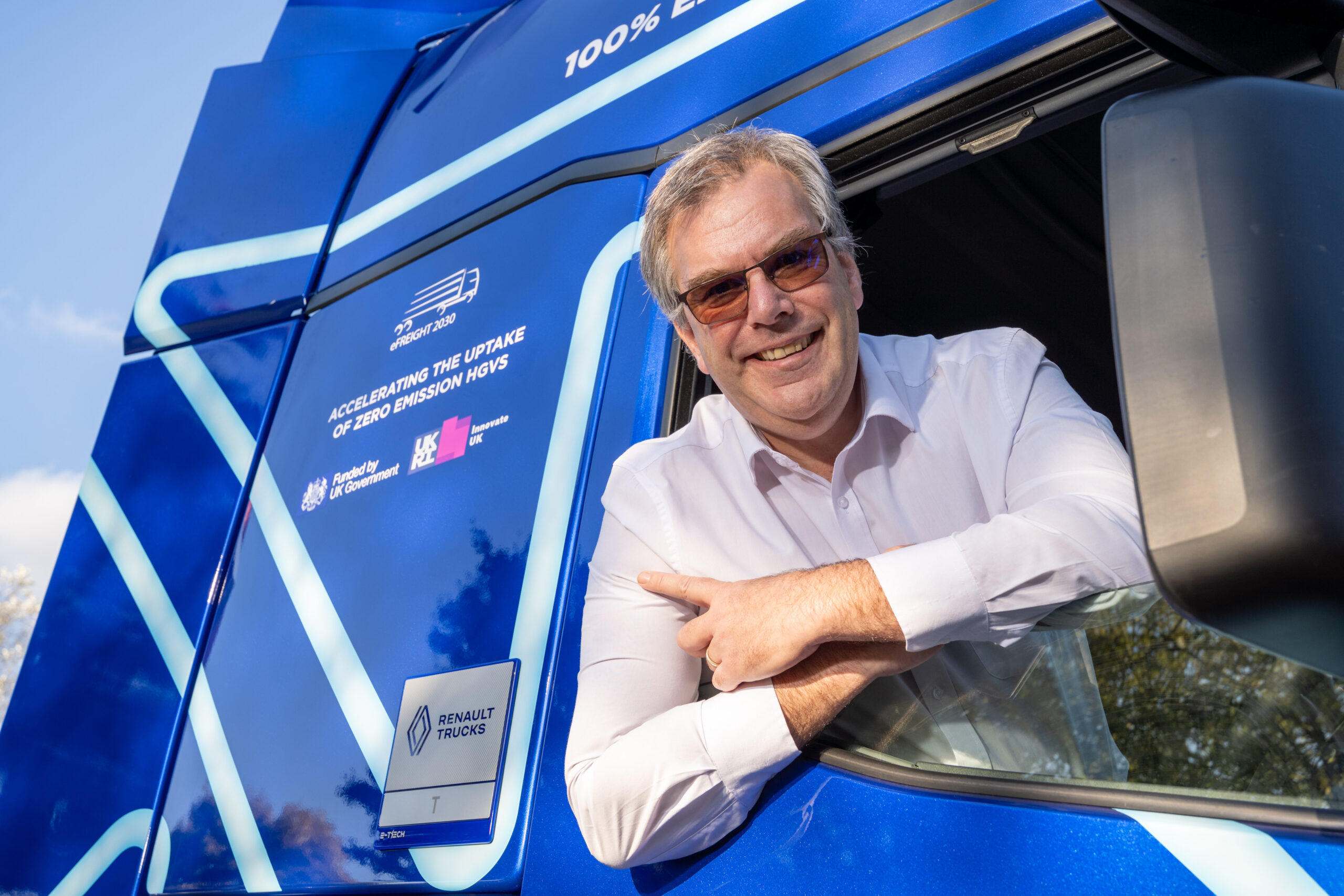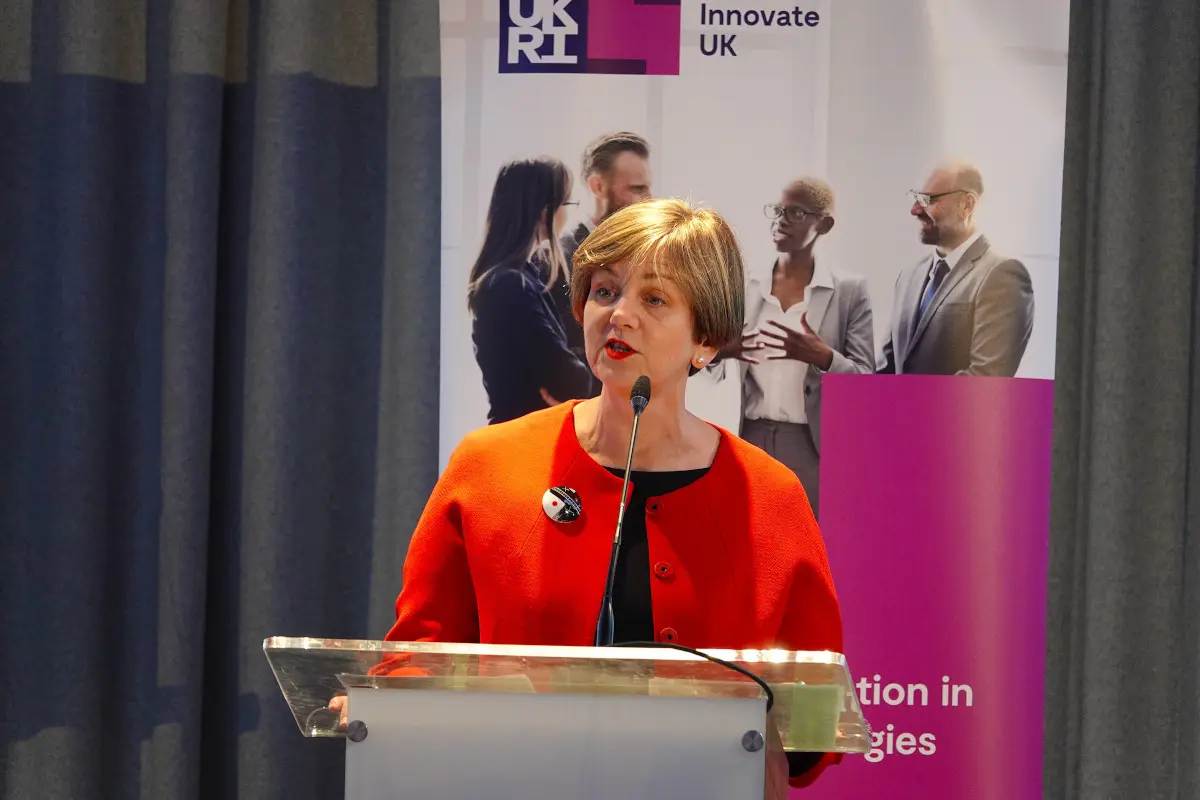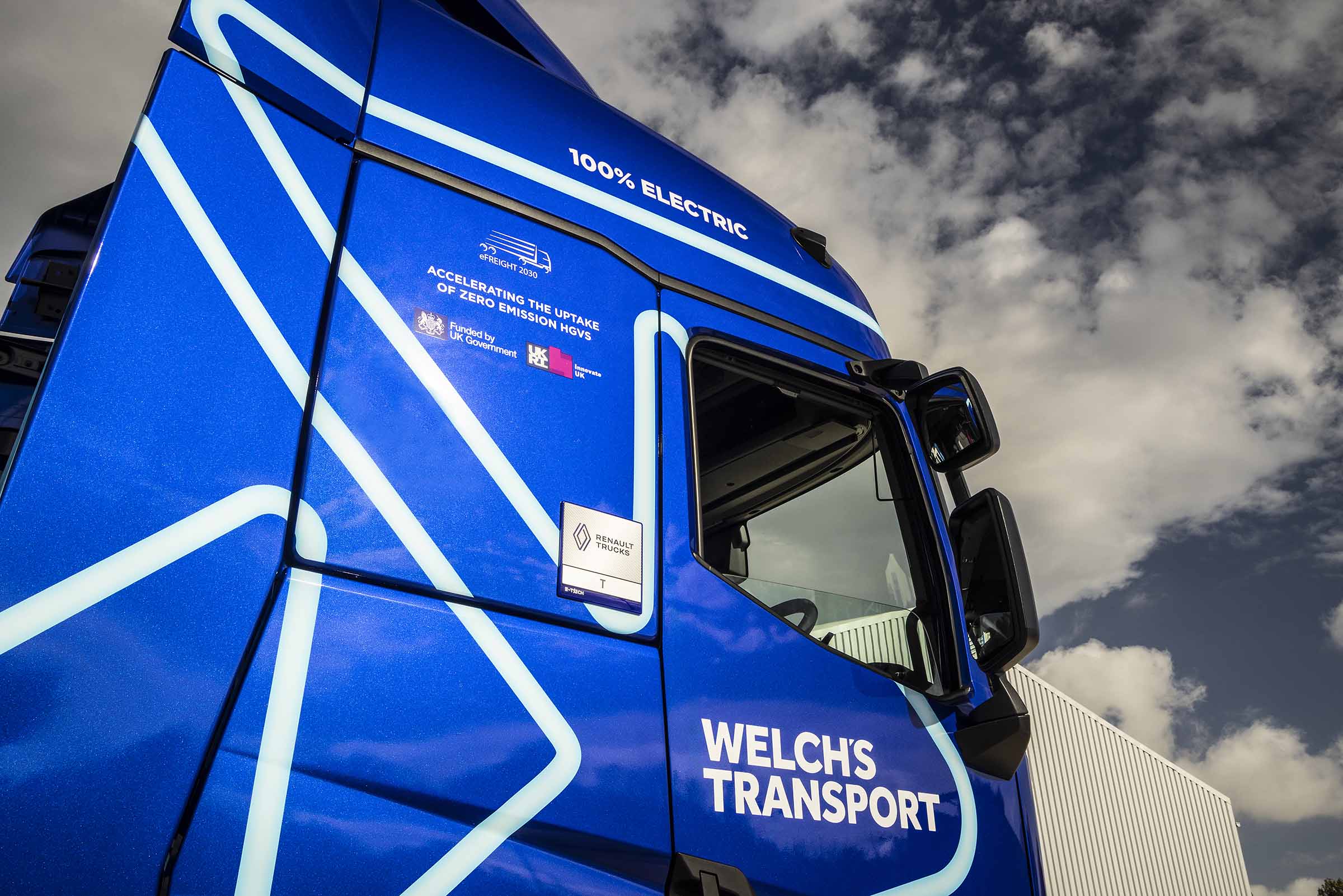Building the Future: eFREIGHT 2030 highlights progress at ZEHID Summit
The recent Zero Emission HGV and Infrastructure Demonstrator (ZEHID) Progress Summit, held on 6 March 2025, provided the perfect platform for eFREIGHT 2030 to showcase the results so far and share our future plans for zero-emission freight transportation. The event also gave the other ZEHID consortia an opportunity to present their own progress updates, highlighting the diverse approaches being taken across the UK to decarbonise the freight sector.
Hosted by the Department for Transport in collaboration with Innovate UK, the Summit featured a keynote address from Lilian Greenwood MP, Minister for Future of Roads, who unveiled plans for over 54 new zero-emission HGV infrastructure hubs across the UK—a critical development in accelerating the adoption of green transport solutions.
“I’m pleased to unveil the map of 54 planned infrastructure locations funded through this programme,” announced Minister Greenwood. “This isn’t just a handful of sites. It’s a nationwide network, from Scotland to the south coast, from city hubs and depots to motorway service areas. We’re ensuring that zero-emission freight isn’t just possible, it’s practical, and practicality is the key for operators.”
The Minister emphasised that the transition to zero-emission HGVs is not merely about meeting climate targets but ensuring Britain’s freight industry remains “competitive, resilient and ready for the future”.

Photo: The new map of planned infrastructure locations unveiled at the ZEHID Progress Summit
eFREIGHT 2030: Achievements to date
Michael Boxwell, CEO of Voltempo and lead of the eFREIGHT 2030 consortium, presented some of the key milestones already achieved by the consortium partners and members to date, which included:
- Successfully securing £76 million in funding, including £49.2 million from the Department for Transport
- Deploying the first wave of zero-emission trucks with major operators including Marks and Spencer, Kuehne+Nagel, and Welch’s Transport using Renault vehicles
- Established operational charging installations at Marks and Spencer sites operated by DHL and at East Midlands Gateway
- Worked with the DVSA to secure official confirmation that drivers can charge electric HGVs during break periods, resolving a longstanding regulatory uncertainty
- Expanded the consortium with recent additions including smaller haulage company I.J. McGills and construction materials giant Tarmac
“It’s great to see the impetus growing and a lot more interest from industry on decarbonisation,” noted Michael during his presentation. “What’s been transformed in the last few years has been incredible. A lot of that has actually been down to the ZEHID programme, because that was what really kick-started it.”

Current infrastructure development
Michael also highlighted the consortium’s infrastructure rollout is progressing rapidly:
- Approximately 33 sites are currently under development
- 30 sites will feature megawatt charging capabilities from day one
- Most sites will include six or more charging bays, with some locations offering up to 12 bays
- All sites are scheduled to be operational by January 2026
- The network will provide a total of 230-240 charging bays to support 100 trucks, creating surplus capacity for future expansion
“We’re trying to get the infrastructure in place first so that operators can have the confidence to make the transition and invest in electric trucks.”
A distinctive feature of the eFREIGHT 2030 approach is its focus on collaborative infrastructure. “The great thing with fleet operators is that logistics is all about solving problems; as an industry that’s what we’re really good at,” Michael highlighted. “We genuinely have competitors working together, seeing how they can do things for the greater good, but also to benefit themselves.”
Megawatt charging innovation
The consortium is implementing megawatt-level charging capabilities from the beginning, rather than installing lower-capacity chargers that would soon become obsolete.
“What’s the point of putting in chargers at 350 kilowatts or 250 kilowatts now, when we already know that we’re going to need megawatt charging in three to five years’ time?” Michael explained. “The megawatt charging will allow the trucks to be charged during a 45-minute break. That means you can double-shift them so much easier, and it gives a lot more flexibility.”
Open to new participants
A central theme of the summit was the importance of collaboration across the industry, with Michael highlighting that “collaboration is at the heart of consortium success”.
On that note, he emphasised that the eFREIGHT 2030 consortium remains open to new fleet operators: “If you’re a fleet operator and you think you’ve missed the boat, you really haven’t. You can get involved. You can get access to trucks and infrastructure, come and talk to us about it.”
The ZEHID Progress Summit highlighted the remarkable progress being made in the UK’s transition to zero-emission freight. With eFREIGHT 2030 leading the charge through innovative technology, collaborative approaches, and forward-thinking initiatives, the future of sustainable freight in the UK looks increasingly promising.
As Minister Greenwood summarised: “The businesses that move first won’t just keep up. They’ll get ahead.”

Photo: Lilian Greenwood, Minister for the Future of Roads.
For more information about joining the eFREIGHT 2030 consortium click here.
